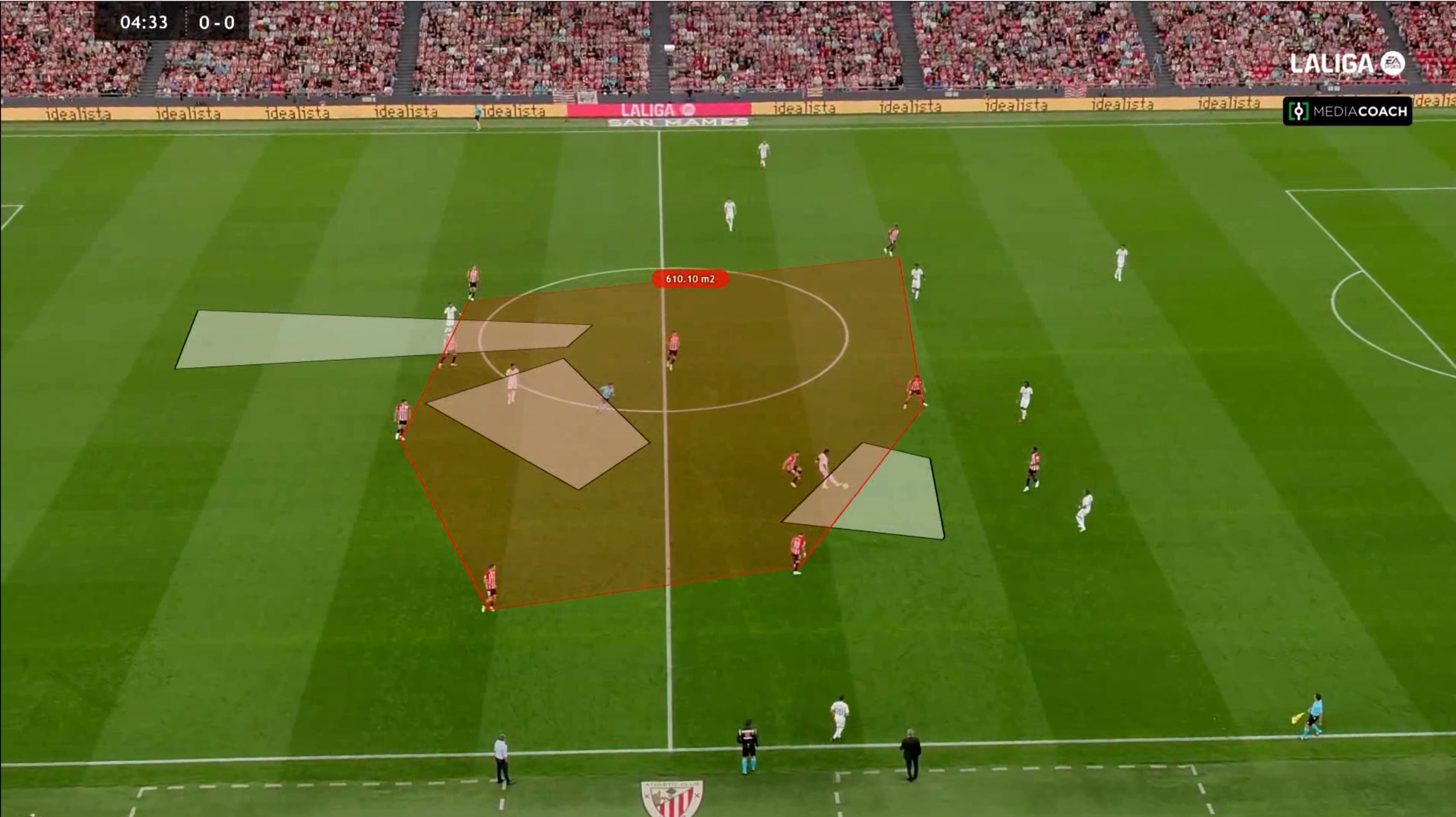
06 Sep Innovating Tactical Analysis: Measuring a Team’s Interior Play Potential with Advanced Space and Movement Tools
In modern football, the concept of interior play has become fundamentally important. While wing play has historically been a dominant tactic, today’s most successful teams are those that can balance wing play with creating spaces in central areas. This balance is key to disorganizing opposing defenses and creating scoring opportunities. However, measuring and optimizing interior play has not been an easy task. This is where an innovative model comes into play, combining spatial analysis with advanced technological tools like modified Convex Hulls and adapted Voronoi diagrams.
Interior Play in Professional Football
«Interior play» refers to a team’s ability to move the ball and create danger in the center of the field, between the opponent’s defensive lines. This style of play requires the creation and exploitation of central spaces within the opponent’s defensive block. Teams like FC Barcelona or Manchester City, managed by coaches like Pep Guardiola, are known for using interior play as a crucial strategic resource.
However, the challenge lies in how to objectively measure this aspect of the game. It’s not enough to analyze how many passes are made in the center of the pitch; it’s necessary to understand how attacking players move and create space within the opponent’s defensive block. To solve this issue, we have developed an analytical model that combines classic spatial analysis tools like Convex Hulls and Voronoi diagrams, with specific adjustments for football.
Methodology: Modified Convex Hull and Adapted Voronoi
At the heart of this model lies the combination of two analytical tools:
- Modified Convex Hull: Defining the Defensive BlockThe Convex Hull is a technique that defines the perimeter of the opponent’s defensive block. In our approach, this Convex Hull is modified by removing the most advanced attacking player if they are clearly outside the defensive block, focusing on the players who are actually interacting with the defensive block. This helps delineate the space where offensive players must operate to generate interior play.
- Adapted Voronoi Diagrams: Mapping Useful SpaceVoronoi diagrams divide the pitch into areas where each player is most likely to reach the ball first. To adapt this tool for football analysis, we adjust the Voronoi cells by considering each player’s speed and acceleration. This allows the model to better reflect the effective space each player can cover in real time.In this context, the Voronoi areas generated by players within the opponent’s Convex Hull represent the potentially useful space for interior play. In other words, these areas indicate where a player can receive the ball and execute the next offensive action. Based on these measurements, we can evaluate a team’s «interior play potential.»
Practical Application: The Case of Real Madrid
To illustrate the usefulness of this model, we analyzed Real Madrid’s possession in a match against Athletic Club. By combining Convex Hull and Voronoi diagrams, we observe how Real Madrid players generate spaces within Athletic’s defensive block.
The constant «dance» between offensive and defensive players is essential in this type of analysis. Attacking players must intentionally move within the defensive block, while defenders adjust their positions to maintain a compact block. This dynamic between both teams directly impacts the quantity and quality of the interior play a team can produce. In the accompanying video analysis, you can see how Real Madrid’s players exploit the spaces created within the opponent’s defensive block to generate passing opportunities and offensive moves.
Model Benefits: A New Tool for Coaches
This innovative approach not only offers a more detailed view of interior play but also provides coaches with a precise tool to improve their team’s tactics. By measuring the useful space generated by players in the center of the field, coaches can identify opportunities to enhance interior play.
This analysis also allows for a comparison between interior and wing play, offering a complete view of how a team alternates between both strategies. Additionally, with the advancement of artificial intelligence and machine learning, this model can be integrated into real-time analysis platforms, helping coaches make smarter tactical decisions during matches.
Future Perspectives: Toward Smarter Football
The use of advanced technologies to measure performance in football is revolutionizing the way the game is understood. Our interior play analysis model is just the beginning. As artificial intelligence tools continue to evolve, coaches will gain even deeper insights into their teams’ performance, optimizing both interior and wing play.
In the near future, this type of analysis will enable real-time predictions of the best tactical decisions, dynamically adjusting to match conditions. We are entering a new era of football, where science and technology play an increasingly crucial role in strategy.
Conclusion
The analysis of interior play in football has evolved thanks to the combination of advanced tools like Convex Hull and Voronoi diagrams. This approach provides coaches with an effective tool to measure the useful space generated within the opponent’s defensive block and optimize offensive tactics. With the advancement of artificial intelligence, the possibilities for real-time analysis will continue to expand, enabling more precise decision-making and smarter football.


